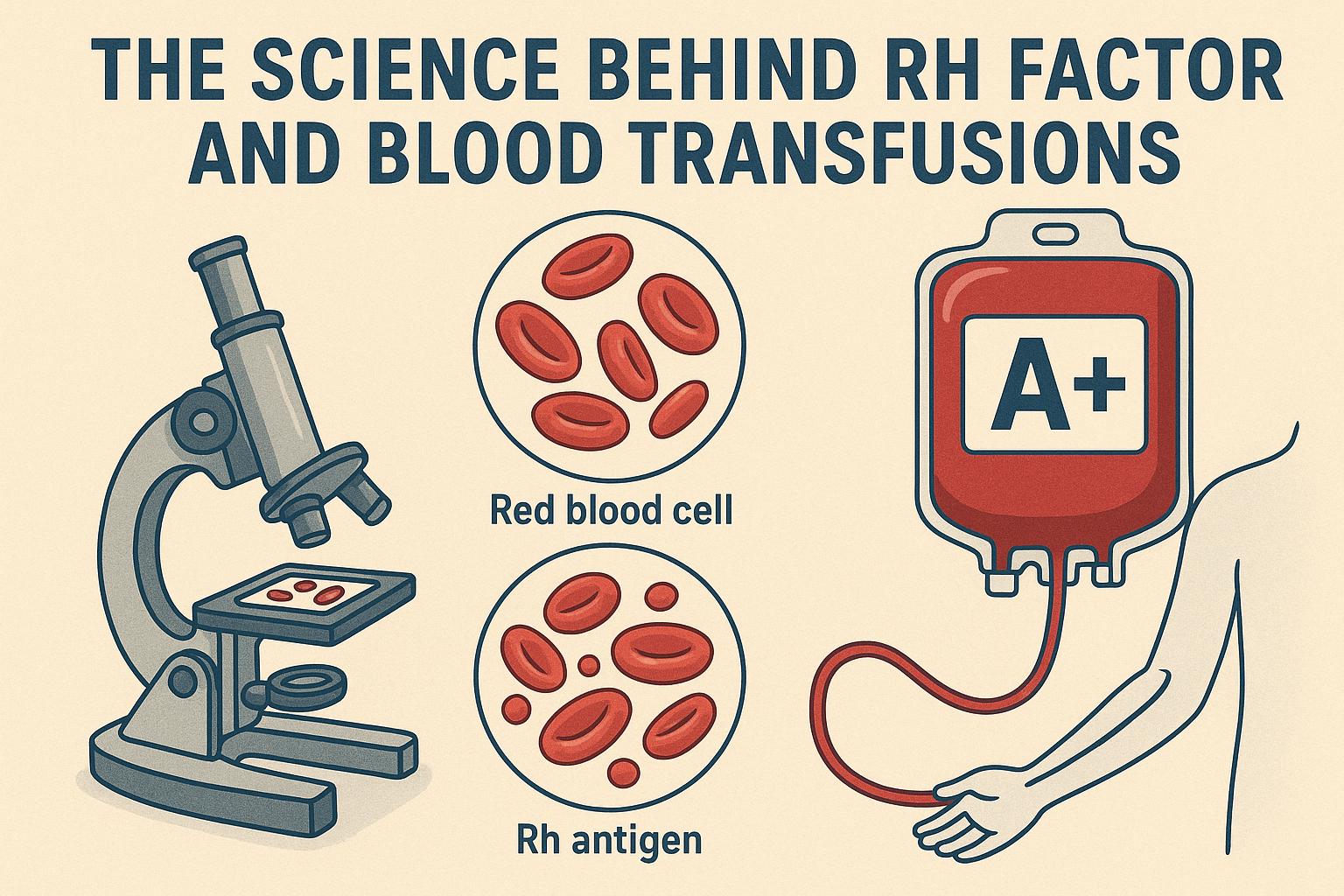The Significance of the Rh Factor
The Rh factor, often referred to as Rhesus factor, is a protein that can be present on the surface of red blood cells. Those with the protein are classified as Rh positive (Rh+), while those without it are Rh negative (Rh-). This distinction is crucial for various medical applications, most notably in blood transfusions and pregnancy.
Discovery and Importance
The Rh factor was discovered in the 1940s, and its identification has revolutionized modern medicine by highlighting a crucial aspect of blood compatibility. Understanding whether a person is Rh positive or Rh negative is vital because of the potential for serious immune reactions if mismatched blood is transfused. When an Rh-negative individual receives Rh-positive blood, their body may produce antibodies against the Rh protein. This immune response can lead to dangerous complications, as the body recognizes the transfused blood cells as foreign invaders and begins to attack them.
Historical Context and Medical Advancements
The discovery of the Rh factor provided a deeper understanding of the complexities within human blood types and improved the safety of medical procedures involving blood. Prior to its identification, unexplained transfusion reactions were a significant concern, often resulting in adverse outcomes. With the knowledge of Rh compatibility, medical professionals could mitigate these risks, ultimately saving countless lives.
Rh Factor in Pregnancy
Rh compatibility plays a particularly critical role during pregnancy. When an Rh-negative woman conceives a child with an Rh-positive partner, there is a possibility of the fetus inheriting the Rh-positive factor. This genetic arrangement can lead to Rh incompatibility, a condition where the mother’s immune system perceives the fetus’s Rh-positive red blood cells as foreign. In response, the mother’s body may produce antibodies against the fetal red blood cells, resulting in a potentially harmful condition known as Hemolytic Disease of the Newborn (HDN).
Preventative Measures: To prevent HDN and ensure a healthy pregnancy, an Rh-negative pregnant woman may receive injections of Rh immunoglobulin (RhIg). These injections work by preventing the mother’s immune system from producing antibodies against the Rh protein, thus protecting the fetus from immune attacks and complications arising from Rh incompatibility.
Long-term Implications for Childbearing
The management of Rh incompatibility extends beyond a single pregnancy. Once a woman is sensitized to the Rh factor, any subsequent pregnancies with Rh-positive fetuses can be at risk. Therefore, monitoring and prophylactic measures are essential components of prenatal care, ensuring healthy outcomes for both the mother and her children.
The Role of Rh Factor in Blood Transfusions
Blood transfusions rely heavily on proper matching of not only ABO blood types but also the Rh factor. The presence or absence of the Rh protein on donated blood cells must align with the recipient’s Rh status to prevent a transfusion reaction. An Rh incompatibility can trigger an immune response, where the recipient’s body recognizes the transfused red blood cells as foreign and begins to destroy them.
Transfusion Reaction
A transfusion reaction resulting from Rh incompatibility can vary in severity. Mild symptoms may include fever and chills, while more severe reactions can result in jaundice due to rapid breakdown of red blood cells, and in more extreme cases, medical emergencies such as cardiac arrest or kidney failure. Therefore, medical professionals prioritize the accurate matching of both ABO and Rh factors to ensure the safety and effectiveness of transfusions.
The Significance of Accurate Blood Typing
Accurate blood typing is a cornerstone of successful blood transfusions. Before any transfusion, blood samples from both the donor and recipient are carefully tested for compatibility. This testing process mitigates the risk of adverse reactions and maximizes the therapeutic benefits of the transfusion, ultimately safeguarding patient health.
Universal Donors and Recipients
In transfusion medicine, O negative blood is often referred to as the universal donor type due to its lack of A, B, and Rh antigens. This characteristic makes it compatible with almost any blood type in emergency situations. However, O negative blood is relatively rare, underscoring the importance of maintaining a diverse blood supply and ensuring that both Rh and ABO compatibility are considered when managing blood resources. This complexity emphasizes the need for a coordinated approach to blood donation and distribution.
Rh Factor Beyond Transfusions and Pregnancy
The significance of the Rh factor extends beyond transfusions and pregnancy. It offers insights into human genetics and has implications in anthropological studies as well. Research into the distribution of Rh-positive and Rh-negative blood across populations provides valuable information about human migration patterns and the evolutionary history of blood types.
Research and Genetic Implications
The Rh factor’s genetic basis has prompted studies into the inheritance patterns of Rh status. Understanding these patterns aids in genetic counseling and helps families anticipate potential Rh-related challenges. Moreover, this knowledge is instrumental in advancing research on gene therapy and personalized medicine.
Conclusion
In conclusion, understanding the science behind the Rh factor is crucial for safe medical practices, particularly in blood transfusions and pregnancy. The Rh factor highlights the sophistication of the human immune system and underscores the meticulous work required in medical settings to avoid complications arising from Rh incompatibility. With continued research and education, the medical community can optimize procedures and contribute to the wellbeing of individuals worldwide. For more detailed information, various medical resources and health organizations offer extensive insights and guidance on the Rh factor and blood transfusions.
